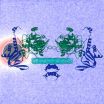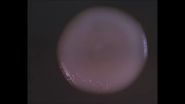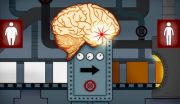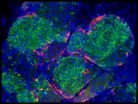(Press-News.org) CAMBRIDGE, Mass--A long-sought goal of creating particles that can emit a colorful fluorescent glow in a biological environment, and that could be precisely manipulated into position within living cells, has been achieved by a team of researchers at MIT and several other institutions. The finding is reported this week in the journal Nature Communications.
The new technology could make it possible to track the position of the nanoparticles as they move within the body or inside a cell. At the same time, the nanoparticles could be manipulated precisely by applying a magnetic field to pull them along. And finally, the particles could have a coating of a bioreactive substance that could seek out and bind with particular molecules within the body, such as markers for tumor cells or other disease agents.
"It's been a dream of mine for many years to have a nanomaterial that incorporates both fluorescence and magnetism in a single compact object," says Moungi Bawendi, the Lester Wolfe Professor of Chemistry at MIT and senior author of the new paper. While other groups have achieved some combination of these two properties, Bawendi says that he "was never very satisfied" with results previously achieved by his own team or others.
For one thing, he says, such particles have been too large to make practical probes of living tissue: "They've tended to have a lot of wasted volume," Bawendi says. "Compactness is critical for biological and a lot of other applications."
In addition, previous efforts were unable to produce particles of uniform and predictable size, which could also be an essential property for diagnostic or therapeutic applications.
Moreover, Bawendi says, "We wanted to be able to manipulate these structures inside the cells with magnetic fields, but also know exactly what it is we're moving." All of these goals are achieved by the new nanoparticles, which can be identified with great precision by the wavelength of their fluorescent emissions.
The new method produces the combination of desired properties "in as small a package as possible," Bawendi says — which could help pave the way for particles with other useful properties, such as the ability to bind with a specific type of bioreceptor, or another molecule of interest.
In the technique developed by Bawendi's team, led by lead author and postdoc Ou Chen, the nanoparticles crystallize such that they self-assemble in exactly the way that leads to the most useful outcome: The magnetic particles cluster at the center, while fluorescent particles form a uniform coating around them. That puts the fluorescent molecules in the most visible location for allowing the nanoparticles to be tracked optically through a microscope.
"These are beautiful structures, they're so clean," Bawendi says. That uniformity arises, in part, because the starting material, fluorescent nanoparticles that Bawendi and his group have been perfecting for years, are themselves perfectly uniform in size. "You have to use very uniform material to produce such a uniform construction," Chen says.
Initially, at least, the particles might be used to probe basic biological functions within cells, Bawendi suggests. As the work continues, later experiments may add additional materials to the particles' coating so that they interact in specific ways with molecules or structures within the cell, either for diagnosis or treatment.
The ability to manipulate the particles with electromagnets is key to using them in biological research, Bawendi explains: The tiny particles could otherwise get lost in the jumble of molecules circulating within a cell. "Without a magnetic 'handle,' it's like a needle in a haystack," he says. "But with the magnetism, you can find it easily."
A silica coating on the particles allows additional molecules to attach, causing the particles to bind with specific structures within the cell. "Silica makes it completely flexible; it's a well developed material that can bind to almost anything," Bawendi says.
For example, the coating could have a molecule that binds to a specific type of tumor cells; then, "You could use them to enhance the contrast of an MRI, so you could see the spatial macroscopic outlines of a tumor," he says.
The next step for the team is to test the new nanoparticles in a variety of biological settings. "We've made the material," Chen says. "Now we've got to use it, and we're working with a number of groups around the world for a variety of applications."
INFORMATION:
The study included researchers at MIT; Massachusetts General Hospital; Institut Curie in Paris; the Heinrich-Pette Institute and the Bernhard-Nocht Institute for Tropical Medicine in Hamburg, Germany; Children's Hospital Boston; and Cornell University. The work was supported by the National Institutes of Health, the Army Research Office through MIT's Institute for Soldier Nanotechnologies, and the Department of Energy.
Written by David Chandler, MIT News Office
Nanoparticles get a magnetic handle
New method produces particles that can glow with color-coded light and be manipulated with magnets
2014-10-09
ELSE PRESS RELEASES FROM THIS DATE:
Advanced x-ray, neutron beam imaging reveal workings of powerful biochemical switch PKA
2014-10-09
(SALT LAKE CITY)—A University of Utah-led study using X-rays and neutron beams has revealed the inner workings of a master switch that regulates basic cellular functions, but that also, when mutated, contributes to cancer, cardiovascular disease and other deadly disorders.
Learning more about how the Protein Kinase A (PKA) switch works will help researchers to understand cellular function and disease, according to Donald K. Blumenthal, Ph.D., associate professor of pharmacology and toxicology at the University of Utah (U of U) College of Pharmacy who led the study. ...
Dead star shines on
2014-10-09
A supernova is the cataclysmic death of a star, but it seems its remnants shine on. Astronomers have found a pulsating, dead star beaming with the energy of about 10 million suns.
This is the brightest pulsar -- a dense stellar remnant leftover from a supernova -- ever recorded, and was seen using NASA's Nuclear Spectroscopic Telescope Array, or NuSTAR.
Lawrence Livermore LLNL researchers were involved in the design and testing of the NuSTAR X-ray optics.
"You might think of this pulsar as the 'Mighty Mouse' of stellar remnants," said Fiona Harrison, the NuSTAR principal ...
NASA's Aqua Satellite tracking Super Typhoon Vongfong in the Philippine Sea
2014-10-09
NASA's Aqua satellite passed over Super Typhoon Vongfong as it tracked through the Philippine Sea on Oct. 9. Instrument aboard Aqua captured visible and infrared images of the now Category 4 Super Typhoon.
Two instruments aboard NASA's Aqua satellite provided visible and infrared data on the Super Typhoon: The Moderate Resolution Imaging Spectroradiometer or MODIS and the Atmospheric Infrared Sounder or AIRS instrument, respectively. MODIS captured a visible image of Super Typhoon Vongfong on Oct. 9 at 04:25 UTC (12:25 a.m. EDT) that showed two concentric eyewalls with ...
Multiple neurodevelopmental disorders have a common molecular cause
2014-10-09
Neurodevelopmental disorders such as Down syndrome and autism-spectrum disorder can have profound, lifelong effects on learning and memory, but relatively little is known about the molecular pathways affected by these diseases. A study published by Cell Press October 9th in the American Journal of Human Genetics shows that neurodevelopmental disorders caused by distinct genetic mutations produce similar molecular effects in cells, suggesting that a one-size-fits-all therapeutic approach could be effective for conditions ranging from seizures to attention-deficit hyperactivity ...
Thanks, fruit flies, for that pleasing beer scent
2014-10-09
VIDEO:
Behavior experiments in which flies were given the choice between wild-type and mutant fermentation headspace in the middle of the experiment, and they migrate accordingly.
Click here for more information.
The familiar smell of beer is due in part to aroma compounds produced by common brewer's yeast. Now, researchers reporting in the Cell Press journal Cell Reports on October 9th have discovered why the yeast (formally known as S. cerevisiae) make that smell: the scent attracts ...
Researchers uncover how 'love hormone' regulates sexual behavior
2014-10-09
Oxytocin has been called the "love hormone" because it plays an important role in social behaviors, such as maternal care and pair bonding. In a study published by Cell Press on October 9th in the journal Cell, researchers uncover oxytocin-responsive brain cells that are necessary for female social interest in male mice during estrus—the sexually receptive phase of their cycle. These neurons, found in the prefrontal cortex, may play a role in other oxytocin-related social behaviors such as intimacy, love, or mother-child bonding.
"Our findings suggest that social ...
Newly discovered brain cells explain a prosocial effect of oxytocin
2014-10-09
Oxytocin, the body's natural love potion, helps couples fall in love, makes mothers bond with their babies, and encourages teams to work together. Now new research at Rockefeller University reveals a mechanism by which this prosocial hormone has its effect on interactions between the sexes, at least in certain situations. The key, it turns out, is a newly discovered class of brain cells.
"By identifying a new population of neurons activated by oxytocin, we have uncovered one way this chemical signal influences interactions between male and female mice," says Nathaniel ...
Hunger games: How the brain 'browns' fat to aid weight loss
2014-10-09
Researchers at Yale School of Medicine have uncovered a molecular process in the brain known to control eating that transforms white fat into brown fat. This process impacts how much energy we burn and how much weight we can lose. The results are published in the Oct. 9 issue of the journal Cell.
Obesity is a rising global epidemic. Excess fatty tissue is a major risk factor for type 2 diabetes, cardiovascular disease, hypertension, neurological disorders, and cancer. People become overweight and obese when energy intake exceeds energy expenditure, and excess calories ...
From human embryonic stem cells to billions of human insulin producing cells
2014-10-09
Harvard stem cell researchers today announced that they have made a giant leap forward in the quest to find a truly effective treatment for type 1 diabetes, a condition that affects an estimated three million Americans at a cost of about $15 billion annually:
With human embryonic stem cells as a starting point, the scientists are for the first time able to produce, in the kind of massive quantities needed for cell transplantation and pharmaceutical purposes, human insulin-producing beta cells equivalent in most every way to normally functioning beta cells.
Doug Melton, ...
Special chromosomal structures control key genes
2014-10-09
CAMBRIDGE, Mass. (October 9, 2014) – Within almost every human cell is a nucleus six microns in diameter—about one 300th of a human hair's width—that is filled with roughly three meters of DNA. As the instructions for all cell processes, the DNA must be accessible to the cell's transcription machinery yet be compressed tightly enough to fit inside the nucleus. Scientists have long theorized that the way DNA is packaged affects gene expression. Whitehead Institute researchers present the first evidence that DNA scaffolding is responsible for enhancing and ...
LAST 30 PRESS RELEASES:
Scalable and healable gradient textiles for multi‑scenario radiative cooling via bicomponent blow spinning
Research shows informed traders never let a good climate crisis go to waste
Intelligent XGBoost framework enhances asphalt pavement skid resistance assessment
Dual-function biomaterials for postoperative osteosarcoma: Tumor suppression and bone regeneration
New framework reveals where transport emissions concentrate in Singapore
NTP-enhanced lattice oxygen activation in Ce-Co catalysts for low-temperature soot combustion
Synergistic interface engineering in Cu-Zn-Ce catalysts for efficient CO2 hydrogenation to methanol
COVID-19 leaves a lasting mark on the human brain
Scientists use ultrasound to soften and treat cancer tumors without damaging healthy tissue
Community swimming program for Black youth boosts skills, sense of belonging, study finds
Specific depressive symptoms in midlife linked to increased dementia risk
An ‘illuminating’ design sheds light on cholesterol
Who is more likely to get long COVID?
Study showcases resilience and rapid growth of “living rocks”
Naval Research Lab diver earns Office of Naval Research 2025 Sailor of the Year
New Mayo-led study establishes practical definition for rapidly progressive dementia
Fossil fuel industry’s “climate false solutions” reinforce its power and aggravate environmental injustice
Researchers reveal bias in a widely used measure of algorithm performance
Alcohol causes cancer. A study from IOCB Prague confirms damage to DNA and shows how cells defend against it
Hidden viruses in wastewater treatment may shape public health risks, study finds
Unlock the power of nature: how biomass can transform climate mitigation
Biochar reshapes hidden soil microbes that capture carbon dioxide in farmland
Reducing saturated fat intake shows mortality benefit, but only in high-risk individuals
Manta rays create mobile ecosystems, study finds
Study: Mixed results in using lipoic acid to treat progressive multiple sclerosis
Norbert Holtkamp appointed director of Fermi National Accelerator Laboratory
New agentic AI platform accelerates advanced optics design
Biologists discover neurons use physical signals — not electricity — to stabilize communication
Researchers discover that a hormone can access the brain by hitchhiking
University of Oklahoma researcher awarded funding to pursue AI-powered material design
[Press-News.org] Nanoparticles get a magnetic handleNew method produces particles that can glow with color-coded light and be manipulated with magnets




